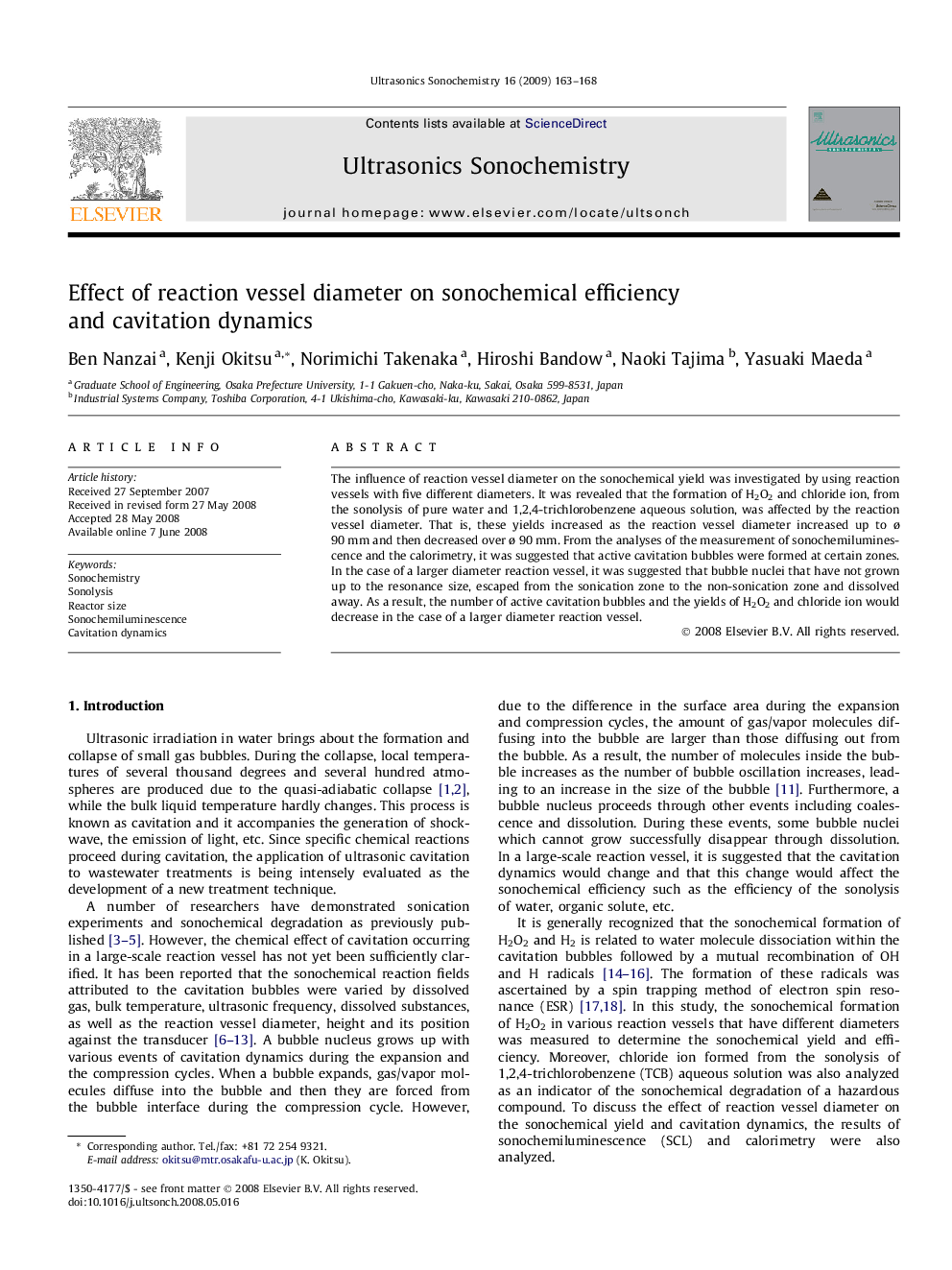| کد مقاله | کد نشریه | سال انتشار | مقاله انگلیسی | نسخه تمام متن |
|---|---|---|---|---|
| 1270601 | 972500 | 2009 | 6 صفحه PDF | دانلود رایگان |

The influence of reaction vessel diameter on the sonochemical yield was investigated by using reaction vessels with five different diameters. It was revealed that the formation of H2O2 and chloride ion, from the sonolysis of pure water and 1,2,4-trichlorobenzene aqueous solution, was affected by the reaction vessel diameter. That is, these yields increased as the reaction vessel diameter increased up to ø 90 mm and then decreased over ø 90 mm. From the analyses of the measurement of sonochemiluminescence and the calorimetry, it was suggested that active cavitation bubbles were formed at certain zones. In the case of a larger diameter reaction vessel, it was suggested that bubble nuclei that have not grown up to the resonance size, escaped from the sonication zone to the non-sonication zone and dissolved away. As a result, the number of active cavitation bubbles and the yields of H2O2 and chloride ion would decrease in the case of a larger diameter reaction vessel.
Journal: Ultrasonics Sonochemistry - Volume 16, Issue 1, January 2009, Pages 163–168